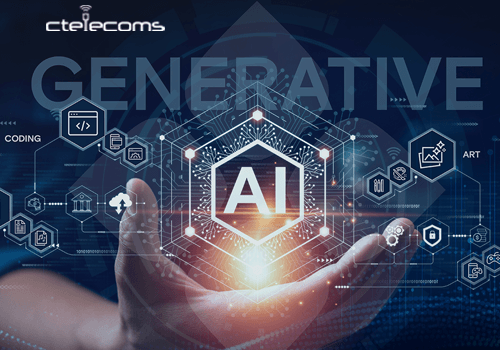

2023/11/11 Microsoft Cloud Solutions 1174 visit(s) 2 min to read
Ctelecoms

Generative AI is a branch of artificial intelligence that can create new content, such as text, images, audio and video, from existing data. It has the potential to revolutionize many industries and applications, from healthcare and life sciences to legal and financial services.
According to a recent report by Gartner, more than 80 per cent of enterprises will have used generative AI-powered APIs or models by 2026. This shows how generative AI has become a top priority for the C-suite and has sparked tremendous innovation in new tools beyond foundation models.
Generative AI-enabled applications are software solutions that use generative AI to provide an enhanced user experience and task augmentation for employees to improve productivity in the workplace. For example, generative AI can help with:
Generative AI can generate high-quality content, such as marketing copy, product descriptions, blog posts, social media posts, etc., based on user inputs or preferences.
Generative AI can enrich existing data sets with synthetic data, such as images, text, audio and video, to improve the performance and accuracy of machine learning models.
Generative AI can assist with creating and testing new designs and prototypes, such as logos, websites, apps, products, etc., based on user feedback or specifications.
Foundation models are large-scale pre-trained models that use AI to learn from massive amounts of data and can be fine-tuned for various downstream tasks. For example, GPT-3 is a foundation model that can generate natural language for different purposes, such as answering questions, writing summaries, composing emails, etc.
Foundation models will advance digital transformation within the enterprise by improving workforce productivity, automating and enhancing customer experience and enabling cost-effective creation of new products and services. According to Gartner, by 2027, foundation models will underpin 60 per cent of natural language processing use cases, a large increase from fewer than five per cent in 2021.
AI trust, risk and security management is a framework that delivers responsible AI by ensuring that AI systems are transparent, trustworthy and secure. It involves:
Providing clear explanations of how AI systems work, what data they use and what outcomes they produce.
Trust: Establishing confidence in the reliability, fairness and accountability of AI systems.
Protecting AI systems from malicious attacks, data breaches and unintended consequences.
Gartner predicts that by 2026, organisations that operationalise AI transparency, trust and security will see their AI models achieve a 50 per cent improvement in terms of adoption, business goals and user acceptance.
Generative AI is transforming the enterprise by enabling new capabilities and opportunities for innovation. However, it also poses new challenges and risks that require careful management and governance. At Ctelecoms, we help businesses of all sizes leverage generative AI to achieve their goals while ensuring ethical and responsible use of AI. Contact us today to find out how we can help you with your generative AI needs.